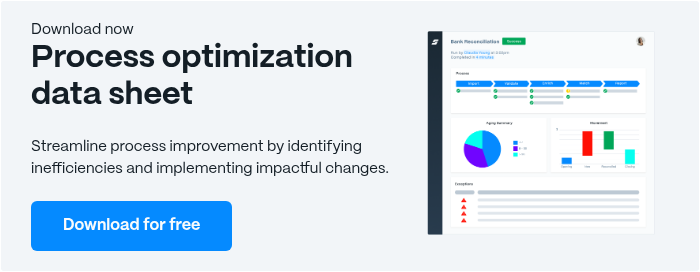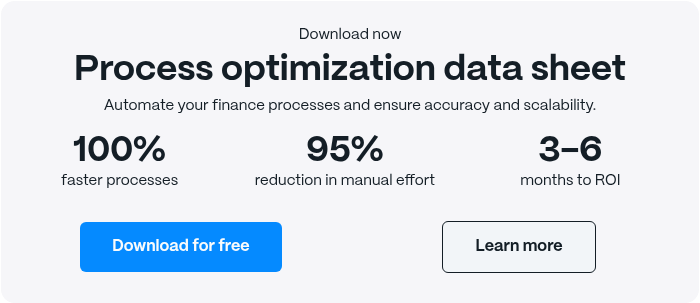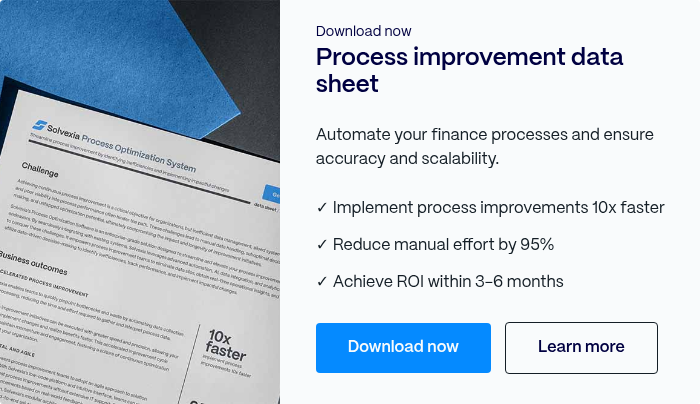Real-World Operational Efficiency Examples

Understanding and implementing operational efficiency is crucial for business survival and growth. Real-world operational efficiency examples showcase how companies have transformed processes, reduced waste, and improved bottom lines.
This article will explore various operational efficiency examples across different sectors. These case studies comprehensively examine how diverse industries tackle challenges and revolutionize workflows.
Coming Up
The Importance of Operational Efficiency
Operational efficiency is fundamental to business success for several reasons. First, it directly impacts a company's profitability. Businesses can significantly cut costs by optimizing processes and reducing waste without compromising on quality. This cost reduction translates to higher profit margins and increased resources for innovation and growth.
Moreover, operational efficiency is intrinsically linked to customer satisfaction. Streamlined operations lead to faster delivery times, fewer errors, and more consistent quality—all of which contribute to a superior customer experience. In an era where customer expectations are higher than ever, efficiency can be a key differentiator that sets a company apart from its competitors.
Efficiency also plays a crucial role in a company's ability to adapt to market changes. Organizations with optimized operations are more agile and can pivot quickly in response to new opportunities or threats. This adaptability is a significant competitive advantage, especially in volatile markets.
Why Efficiency Matters More Now
Recent economic conditions have amplified the importance of operational efficiency. The global pandemic, supply chain disruptions, and economic uncertainties have created a business environment where efficiency is not just an advantage—it's a necessity for survival.
For instance, the COVID-19 pandemic forced many businesses to shift to remote work models rapidly. Companies that already had efficient digital processes in place were able to make this transition more smoothly, maintaining productivity levels and even gaining market share. On the other hand, businesses with inefficient operations struggled to adapt, losing valuable time and resources.
Furthermore, supply chain issues have highlighted the need for efficient inventory management and procurement processes. Companies with lean, well-optimized supply chains have been better equipped to navigate shortages and delays, maintaining their operations while competitors faltered.
In economic uncertainty, efficiency has become a buffer against market volatility. Businesses that run lean operations are better positioned to weather economic downturns, as they can more easily adjust their costs in response to fluctuating demand.
Operational Efficiency Examples Across Industries
Financial Services: Streamlining Loan Approval Process in Banking
One significant area where banks have improved operational efficiency is in the loan approval process. Traditionally, this process was time-consuming, paper-intensive, and prone to errors. Here's how a modern bank might optimize this process:
- Digital Application Submission: Instead of requiring customers to visit a branch and fill out paper forms, banks now offer online loan applications. This allows customers to apply 24/7 from any location, reducing the workload on branch staff and improving customer convenience.
- Automated Document Verification: Banks implement optical character recognition (OCR) and artificial intelligence (AI) technologies to automatically extract and verify information from submitted documents such as pay stubs, tax returns, and identification cards. This significantly reduces manual data entry and the associated errors.
- AI-Powered Credit Scoring: Advanced algorithms analyze traditional credit scores and alternative data sources like utility bill payments, rental history, and even social media activity to assess creditworthiness. This provides a more comprehensive risk assessment and can expand the pool of eligible borrowers.
- Automated Underwriting: For straightforward loan applications that meet predefined criteria, automated underwriting systems can make instant decisions without human intervention. This dramatically reduces processing time for many loans.
- Digital Contract Signing: E-signature technology allows approved borrowers to sign loan documents electronically, eliminating the need for in-person meetings or mailing physical documents.
- Integrated Compliance Checks: Automated systems perform real-time checks against anti-money laundering (AML) and know-your-customer (KYC) databases, ensuring regulatory compliance without manual intervention.
- Centralized Data Management: All loan-related information is stored in a centralized, cloud-based system, which allows authorized personnel across departments and branches to easily access it.
- Predictive Analytics for Follow-up: AI systems analyze patterns in loan applications and approvals to predict which customers might need additional support or are likely to default, allowing for proactive intervention.
Results of Implementation:
- Reduction in loan processing time from weeks to days or even hours for some products.
- Decrease in operational costs by up to 30-40% due to reduced manual labor and paper usage.
- Improved risk assessment accuracy leads to better loan performance and reduced default rates.
- Enhanced customer satisfaction due to faster decisions and a more convenient application process.
- Increased loan volumes as the streamlined process allows banks to handle more applications with the same resources.
Healthcare: Streamlining Operating Room (OR) Utilization
Operating rooms are a critical resource in hospitals, accounting for over 60% of admissions and 65% of revenue in most facilities. However, traditional block-scheduling approaches often fail to optimize OR time effectively. Here's how hospitals are using lean principles and predictive analytics to improve OR utilization:
- Data Mining and Pattern Analysis: Advanced analytics platforms mine historical utilization data to identify patterns in OR usage. This includes analyzing factors such as surgeon-specific utilization rates, procedure durations, seasonal variations in demand, and emergency vs. elective surgery patterns.
- Predictive Modeling: Using the mined data, predictive models are created to forecast future OR needs accurately. These models can predict likely unused block time, potential overbooking situations, and optimal scheduling windows for different procedure types.
- Cloud-Based Scheduling Systems: Replacing traditional phone, fax, and email-based scheduling with cloud-based systems allows for real-time updates to OR schedules, easy access for all stakeholders (surgeons, OR staff, administrators), and automated notifications for schedule changes or available time slots.
- Mobile Technology Integration: Mobile apps connected to the scheduling system enable surgeons to request or release OR time on the go, OR managers to respond quickly to scheduling requests, and push notifications for urgent schedule changes or opportunities.
- Automated Optimization Algorithms: These algorithms continuously analyze the schedule and suggest improvements, such as consolidating partially filled blocks, identifying opportunities to fit in additional procedures, and balancing workload across available ORs and staff.
- Performance Metrics and Feedback: The system tracks key performance indicators (KPIs) like OR utilization rates, on-time start percentages, and turnover times between procedures. These metrics provide feedback to surgeons and staff, encouraging continuous improvement.
- Machine Learning for Continuous Improvement: As more data is collected, machine learning algorithms refine the predictive models, leading to increasingly accurate forecasts and recommendations.
Results of Implementation:
- Increased OR utilization rates by 10-20%.
- Reduced idle time between procedures.
- Improved surgeon satisfaction due to more flexible scheduling.
- Increased revenue from accommodating more procedures.
- Better patient access with shorter wait times for surgeries.
Manufacturing: Implementing Overall Equipment Effectiveness (OEE)
Overall Equipment Effectiveness (OEE) is a crucial metric for measuring and improving manufacturing efficiency. It provides a comprehensive view of how well manufacturing equipment is performing by combining three key factors:
- Availability: The percentage of scheduled time the equipment is available for operation.
- Performance: The speed at which the equipment runs compared to its designed speed.
- Quality: The percentage of good parts produced compared to the total.
Here's how a manufacturing company might implement and use OEE to improve operational efficiency:
- Baseline Measurement: The company starts by calculating its current OEE using the formula: OEE = Availability x Performance x Quality. For example, if Availability = 90%, Performance = 80%, and Quality = 95%, then OEE = 0.90 x 0.80 x 0.95 = 68.4%.
- Goal Setting: The company sets a target OEE. In typical manufacturing industries, OEE is benchmarked at 80-90%.
- Data Collection and Analysis: The company implements real-time data collection systems to monitor equipment performance continuously. This might involve installing machine sensors and implementing a manufacturing execution system (MES) to collect and analyze data.
- Identifying Improvement Areas: By breaking down OEE into its components, the company can pinpoint specific areas for improvement:
- Availability: Reduce unplanned downtime through better maintenance practices.
- Performance: Address speed losses and minor stops.
- Quality: Reduce defects and rework.
- Implementing Improvements: Based on the analysis, the company might implement predictive maintenance to reduce unplanned downtime, optimize production schedules to reduce changeover times, provide operator training to improve equipment handling and reduce minor stops, and implement quality control measures to reduce defects.
- Continuous Monitoring and Improvement: The company continues to track OEE and its components, making iterative improvements over time.
Results of Implementation:
- Increased OEE from 68.4% to 85%.
- Reduced unplanned downtime by 50%.
- Increased production output by 20%.
- Reduced defect rate by 30%.
This example demonstrates how using a comprehensive metric like OEE can help manufacturing companies identify specific areas for improvement, implement targeted solutions, and achieve significant gains in operational efficiency. By simultaneously focusing on availability, performance, and quality, companies can optimize their equipment usage, increase productivity, and reduce waste, ultimately leading to improved profitability and competitiveness in the market.
Measuring Operational Efficiency
Businesses must be able to measure operational efficiency effectively to truly understand and improve it. This involves identifying and tracking key performance indicators (KPIs) that reflect the organization's strategic and operational goals.
Key Performance Indicators (KPIs)
Common metrics used to measure operational efficiency include:
- Overall Equipment Effectiveness (OEE): This is primarily used in manufacturing to measure equipment productivity. It considers the equipment's availability, performance, and quality, providing a comprehensive view of operational performance.
- Cycle Time: The total time it takes to complete a process from start to finish. Reducing cycle time is often a key focus for improving operational efficiency.
- Employee Productivity is often measured as output per employee or revenue per employee. This metric helps determine how effectively the workforce is being utilized.
- Customer Satisfaction Scores: Reflect the efficiency of customer-facing processes. High customer satisfaction often correlates with efficient operations.
- Cost per Unit: This metric measures the average cost to produce one unit of product, which is particularly useful in production environments.
- Inventory Turnover indicates how efficiently a company manages its inventory by showing how many times it is sold and replaced over a period.
Efficiency Ratios
Efficiency ratios provide insights into how well a company uses its resources to generate revenue. Key efficiency ratios include:
- Asset Turnover Ratio: Measures how efficiently a company uses its assets to generate sales. A higher ratio indicates better utilization of assets.
- Inventory Turnover Ratio: Indicates how quickly a company sells and replaces its inventory. Higher turnover means efficient inventory management.
- Accounts Receivable Turnover Ratio: This ratio shows how effectively a company collects payments from its customers. A higher ratio indicates efficient credit and collection processes.
Tools for Measuring and Improving Efficiency
Modern Technology has created many tools to help businesses measure and improve their operational efficiency. These tools range from comprehensive enterprise resource planning (ERP) systems to specialized data analytics platforms.
- ERP Systems: Platforms like SAP and Oracle offer integrated solutions that cover various aspects of business operations, from finance to human resources and supply chain management. These systems provide a holistic view of business operations, enabling better decision-making and process optimization.
- Business Intelligence (BI) Tools: Solutions such as Tableau and Power BI allow businesses to visualize and analyze data from multiple sources, providing insights into operational performance and identifying areas for improvement.
- Process Mining Software: Tools like Celonis use data from IT systems to visualize and analyze business processes, helping companies identify inefficiencies and bottlenecks.
- Project Management Software: Platforms like Asana, Trello, and Jira help teams collaborate more effectively, track progress, and identify roadblocks in project execution.
- Customer Relationship Management (CRM) Systems: Solutions like Salesforce manage customer interactions and provide valuable data on sales efficiency and customer service performance.
- Data Analytics Platforms: Advanced analytics tools like SAS and R allow businesses to perform complex statistical analyses and predictive modeling, providing deeper insights into operational performance and potential improvements.
- Solvexia: This process automation platform helps businesses streamline their operations by automating complex, data-intensive processes. It's particularly useful for finance and operations teams looking to improve efficiency in reporting, reconciliation, and other data-heavy tasks.
By leveraging these tools, businesses can better understand their operations, identify inefficiencies, and implement data-driven improvements. The key is to choose tools that align with the organization's specific needs and integrate well with existing systems.
Barriers to Achieving Operational Efficiency
While operational efficiency benefits are clear, many organizations face significant challenges in implementing and maintaining efficient processes. Understanding these barriers is crucial for developing effective strategies to overcome them.
- Resistance to Change: One of the most common barriers is employee resistance to new processes or technologies. People often become comfortable with existing working methods, even inefficient ones.
- Lack of Leadership Support: Without strong backing from top management, efficiency initiatives may not receive the resources or attention they need to succeed.
- Siloed Organizational Structures: When departments operate in isolation, it can be difficult to implement company-wide efficiency improvements.
- Inadequate Technology Infrastructure: Outdated or incompatible systems can hinder efforts to streamline processes and improve data flow.
- Short-term Focus: Pressure for immediate results can lead to neglect of long-term efficiency improvements that require an initial investment.
- Lack of Skills or Training: Employees may lack the necessary skills to implement or work within new, more efficient systems.
- Poor Communication: Ineffective communication can lead to misunderstandings about the purpose and implementation of efficiency initiatives.
- Complexity of Operations: In large organizations with complex operations, identifying and addressing all inefficiencies can be challenging.
- Regulatory Constraints: Some industries face strict regulations that can limit flexibility in process improvements.
- Resource Constraints: Limited budgets or personnel can make investing in efficiency-enhancing technologies or training difficult.
Overcoming These Barriers
While these challenges can be significant, they are not insurmountable. Here are strategies for overcoming barriers to operational efficiency:
- Foster a Culture of Continuous Improvement: Encourage all employees to identify and suggest improvements. Involving staff in the process can help overcome resistance to change.
- Secure Leadership Buy-in: Demonstrate the potential ROI of efficiency initiatives to gain support from top management. Their visible commitment can drive organization-wide acceptance.
- Implement Cross-functional Teams: Break down silos by creating teams that span different departments, fostering collaboration and a more holistic approach to efficiency.
- Invest in Technology Wisely: Conduct thorough assessments to identify the most impactful technology investments. Consider scalable solutions that can grow with the organization.
- Balance Short-term and Long-term Goals: Develop a strategic plan that addresses immediate needs while laying the groundwork for long-term improvements.
- Prioritize Training and Skill Development: Invest in comprehensive training programs to ensure employees have the skills to work efficiently with new processes and technologies.
- Improve Communication Channels: Establish clear, open lines of communication about efficiency initiatives, their purposes, and their benefits.
- Use Process Mapping: Visualize complex processes to identify inefficiencies and improvement opportunities easily.
- Stay Informed on Regulations: Work closely with legal and compliance teams to find efficient ways to meet regulatory requirements.
- Allocate Resources Strategically: Prioritize efficiency initiatives based on potential impact and allocate resources accordingly. Consider phased approaches for large-scale changes.
- Leverage Data Analytics: Use data-driven insights to identify areas of inefficiency and measure the impact of improvements.
- Embrace Agile Methodologies: Adopt agile project management and process improvement approaches, allowing for more flexibility and faster iterations.
By systematically addressing these barriers and implementing targeted solutions, organizations can create an environment conducive to continuous improvement and operational excellence.
Conclusion
The journey through various operational efficiency examples across industries underscores a crucial point: efficiency is not just about cutting costs but creating a lean, agile, and responsive organization capable of thriving in a competitive landscape.
From manufacturing giants implementing lean principles to tech companies leveraging cutting-edge automation, we've seen how operational efficiency can transform businesses. These real-world examples demonstrate that efficiency improvements can lead to:
- Significant cost savings
- Enhanced product quality
- Improved customer satisfaction
- Increased agility and market responsiveness
- Better employee engagement and productivity
- Stronger competitive positioning
However, achieving operational efficiency is an ongoing process, not a one-time effort. It requires a commitment to continuous improvement, a willingness to embrace new technologies and methodologies, and overcoming various organizational and cultural barriers.
The tools and strategies discussed for measuring and improving efficiency provide a roadmap for businesses looking to embark on their efficiency journeys. From leveraging data analytics and process mapping to implementing comprehensive ERP systems, organizations have a wealth of resources to drive efficiency gains.
Ultimately, the impact of operational efficiency on business success cannot be overstated. In an era of rapid technological change and global competition, efficiency can be the difference between thriving and merely surviving. Companies that prioritize operational efficiency are better positioned to:
- Adapt to market changes quickly
- Invest in innovation and growth
- Attract and retain top talent
- Deliver superior value to customers
- Achieve sustainable long-term success
As we look to the future, operational efficiency will continue to be a critical factor in business success. Organizations that can effectively identify inefficiencies, implement improvements, and foster a culture of continuous optimization will be well-equipped to navigate the challenges and opportunities that lie ahead.
Businesses across all sectors can unlock new levels of performance, resilience, and competitive advantage by learning from the operational efficiency examples presented and applying these lessons to their own contexts. In doing so, they secure their own success and contribute to the overall efficiency and productivity of the global economy.
FAQ
Intelligent reconciliation solution
Intelligent rebate management solution
Intelligent financial automation solution
Intelligent Financial Automation Solution
Intelligent financial automation solution
Intelligent financial automation solution
Intelligent financial automation solution
Intelligent financial automation solution
Intelligent regulatory reporting solution
Free up time and reduce errors
Recommended for you

Request a Demo
Book a 30-minute call to see how our intelligent software can give you more insights and control over your data and reporting.

Reconciliation Data Sheet
Download our data sheet to learn how to automate your reconciliations for increased accuracy, speed and control.

Regulatory Reporting Data Sheet
Download our data sheet to learn how you can prepare, validate and submit regulatory returns 10x faster with automation.

Financial Automation Data Sheet
Download our data sheet to learn how you can run your processes up to 100x faster and with 98% fewer errors.

Financial Automation Data Sheet
Download our data sheet to learn how you can run your processes up to 100x faster and with 98% fewer errors.

Financial Automation Data Sheet
Download our data sheet to learn how you can run your processes up to 100x faster and with 98% fewer errors.

Financial Automation Data Sheet
Download our data sheet to learn how you can run your processes up to 100x faster and with 98% fewer errors.

Financial Automation Data Sheet
Download our data sheet to learn how you can run your processes up to 100x faster and with 98% fewer errors.

Financial Automation Data Sheet
Download our data sheet to learn how you can run your processes up to 100x faster and with 98% fewer errors.

Rebate Management Data Sheet
Download our data sheet to learn how you can manage complex vendor and customer rebates and commission reporting at scale.

Top 10 Automation Challenges for CFOs
Learn how you can avoid and overcome the biggest challenges facing CFOs who want to automate.
.svg)






